8 Domestic Travel Tips Guaranteed to Make Your Trip a Success
Australia is a vast and beautiful country, with a diverse range of landscapes, cities, and experiences to explore. Whether you’re planning a weekend getaway or an extended road trip, here are some handy tips to help you navigate domestic travel within Australia!
Table of Contents
Plan Your Itinerary
Before hitting the road or booking your flights, take some time to plan your travels:
Research Destinations
Australia has many iconic places, from Sydney’s Harbour to the Great Barrier Reef and the Outback. Decide which locations you want to explore based on your interests—be it beaches, nature, city life, or historical sites. Check out the Australia.com website for travel ideas, or if you want to visit some lesser known places, try Atlas Obscura.
For example, something that’s quite unique in Australia, is the “big things” culture. There are huge sculptures of everyday objects, such as foods, animals or sporting items. To name just a few, there’s the big pineapple, big pelican, big golden guitar and big Rubik’s cube. This list is far from comprehensive, though, as there are just over 1075 big things in Australia!
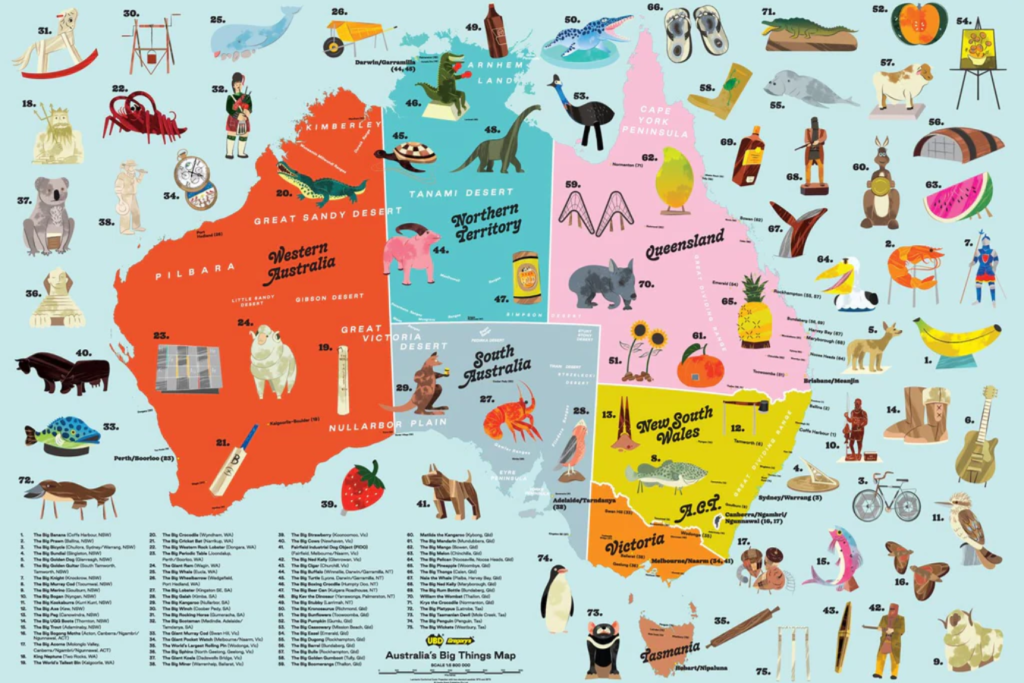
If you want to delve into Australia’s history, you can consider traveling to some Aboriginal sites. The Aboriginal cultures date back more than 50,000 years, meaning there’s a lot to uncover and discover as you explore the continent.
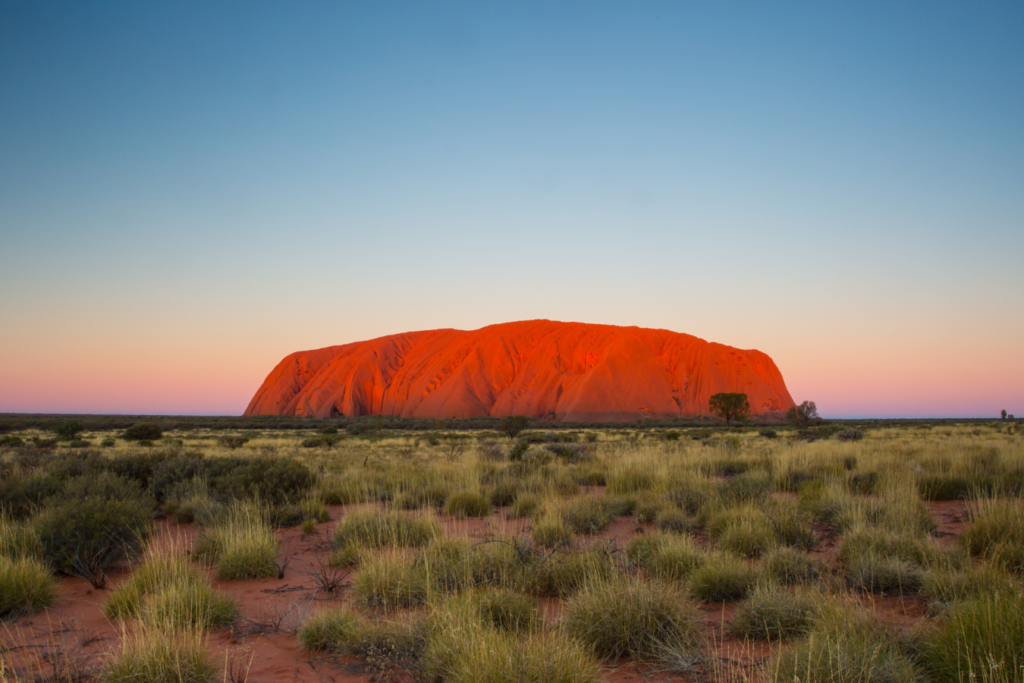
Perhaps the most famous example of such a site is Uluru Kata Tjuta National Park, the spiritual (and geographical) heart of Australia. Uluru Kata Tjuta National Park features the iconic sandstone formations of Uluru and Kata Tjuta, rising from the Central Australian desert. These sites hold deep significance for the Anangu people of the Yankunytjatjara and Pitjantjatjara groups, rich with Dreaming stories that describe how ancestral beings shaped the land. The marks of their experiences are embodied in the monolith Uluru and its companion. While climbing is no longer allowed, both formations attract pilgrims from around the world.
Another example is Lake Mungo, in the arid NSW outback, a part of the World Heritage-listed Willandra Lakes Region. Lake Mungo holds significant cultural importance for the Paakantyi, Nyiampaa, and Mutthi Mutthi peoples. It is home to ‘Mungo Man,’ the oldest human remains in Australia, who was found with a tooth ritually removed in the same manner many Aboriginal cultures do today.
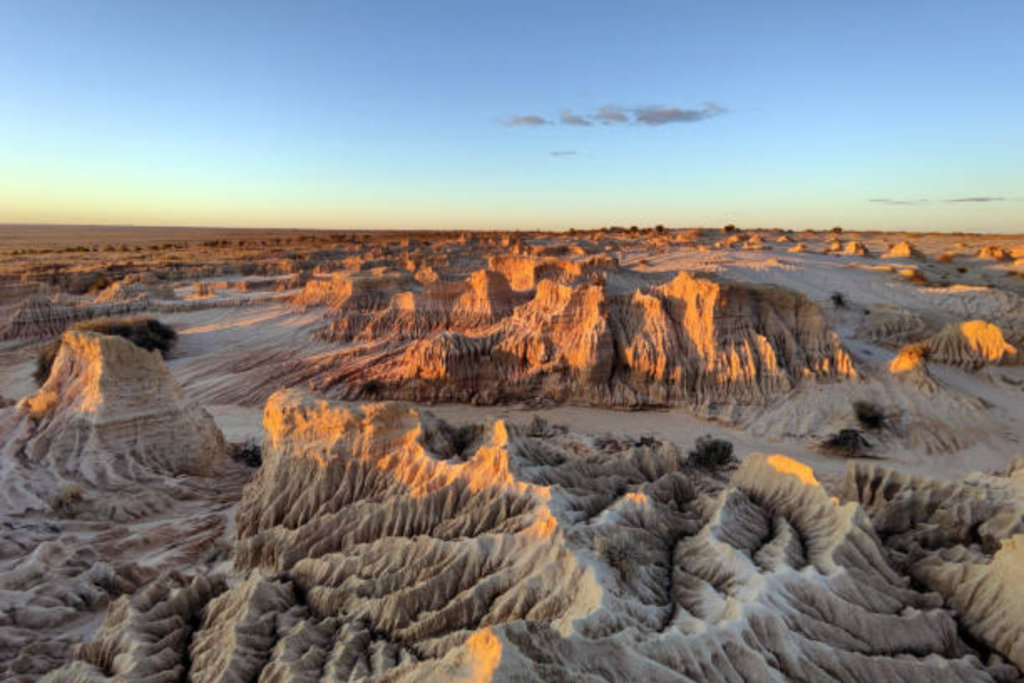
There’s also Rottnest Island, named by Dutch sailors who mistook its quokka population for rats. The island is also known as Wadjemup, named by the Whadjuk Noongar people. This name means “land across the sea inhabited by spirits” and is central to their beliefs about life after death. Historically, Wadjemup served as an important ceremonial ground before becoming an Aboriginal penal colony in the 1800s, where many suffered and died away from their families and culture.
When traveling to these sites, there are a few things to consider to remain respectful, and to appreciate the history and culture of these places. Moreover, entry to some areas requires visitor permits or National Parks passes, so do your research to avoid disappointment. Be mindful also that alcohol consumption may be frowned upon or banned on Aboriginal-owned land and in predominantly Aboriginal communities.
As a matter of fact, alcohol consumption is completely restricted in some Aboriginal communities, including popular destinations like Alice Springs, Katherine and almost all areas of Far North Queensland (Shire of Cook), with the first offence “costing” 375 penalty units (currently $60,487)!
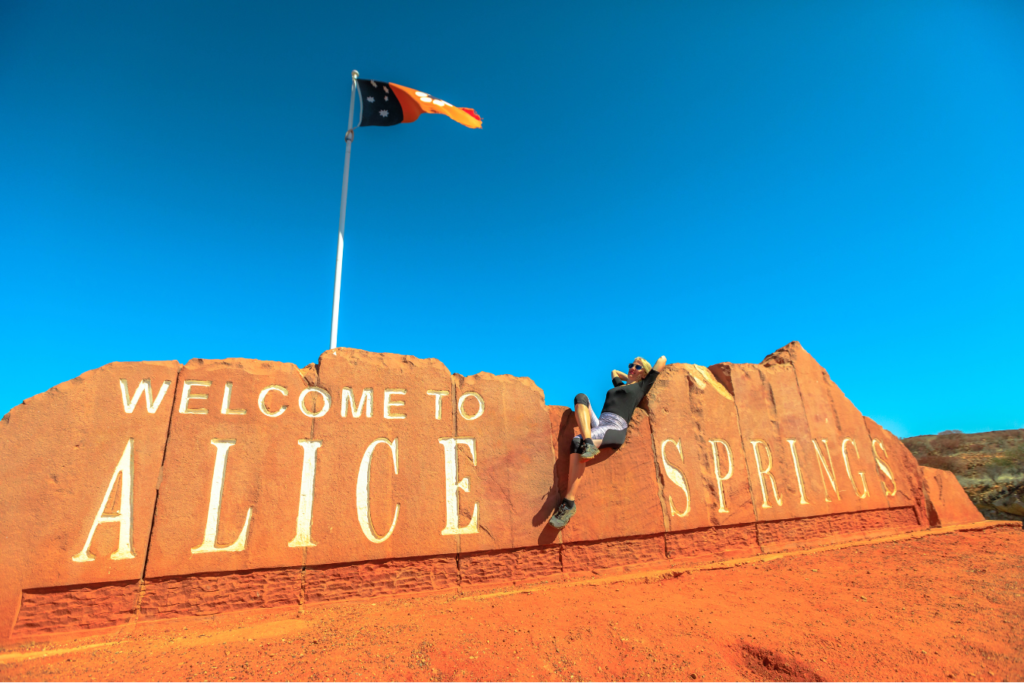
While this may sound discriminatory, it’s important to realise that the community Elders and a majority of women in these communities strongly support the ban, as alcohol abuse has led to a scary increase in violent crime, domestic abuse and many other social issues that the ban aims to address.
So far, it seems to be doing just that, with geography playing to the government’s advantage – these areas are incredibly remote, meaning the people living there can’t just drive to another town to buy alcohol, as the closest town is usually 1000-2000km away. And no, that’s not a typo.
A such, while researching your travel destinations, be sure to not just research the current weather and best beach to hit, but also any regulations that might apply to avoid fines!
Accommodation
Book your accommodation in advance, especially during peak travel seasons (December to February). Remember that December-February is also when all the kids are on their summer holidays, so everything and everywhere will be busier than usual. Outside of these periods, you can usually get away with last minute bookings and stays.
Options range from hotels and hostels to camping sites and holiday rentals. Depending on your travel style and comfort expectations, it might be fun to try a few different options to see which one best suits your preferences. Here are the main considerations:
Hotels
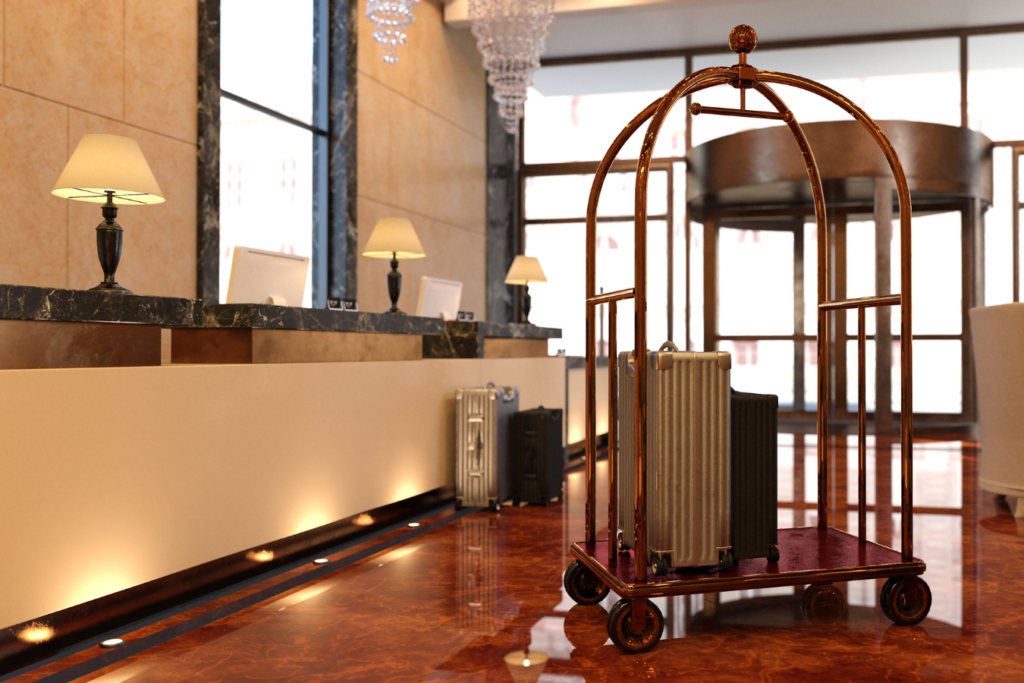
Pros:
- Comfort and Amenities: Hotels often provide luxurious amenities such as room service, pools, and gyms.
- Convenience: Typically located in central areas, making access to attractions easier.
- Security: Most hotels offer secure environments with staff on-site.
Cons:
- Cost: Hotels can be expensive, especially in tourist-heavy areas.
- Less Personalisation: Standardised services may lack local flavour or personal touch.
Hostels
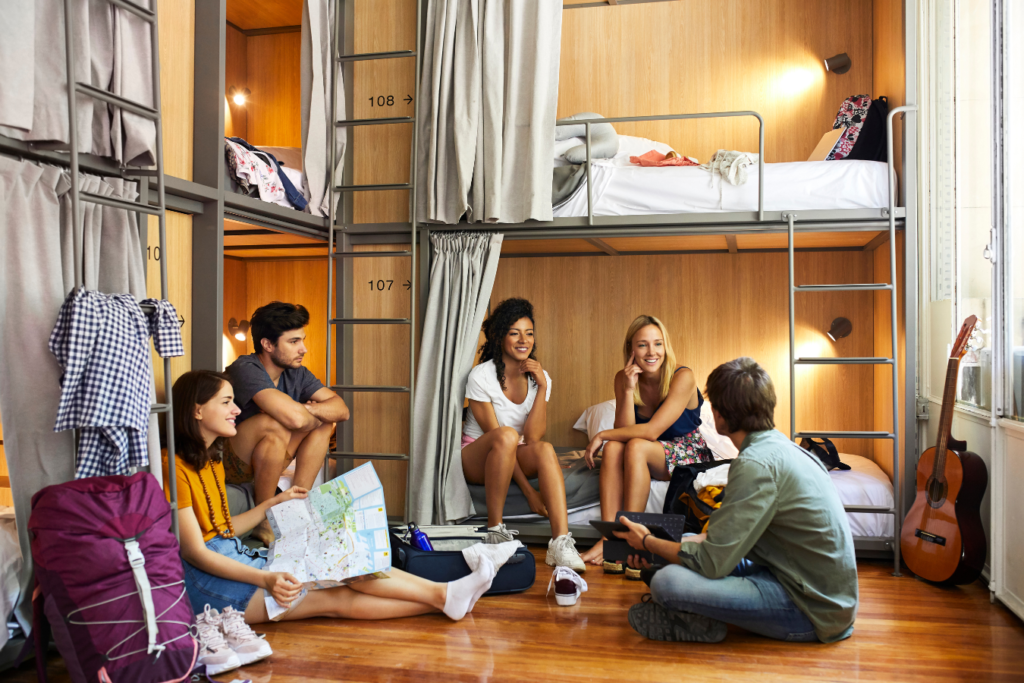
Pros:
- Affordability: Hostels are usually much cheaper than hotels, making them ideal for budget travellers.
- Social Atmosphere: Great for meeting other travellers and making new friends.
- Unique Experiences: Often provide local insights and activities.
Cons:
- Shared Facilities: Bathrooms and kitchens are often communal, which may not suit everyone.
- Noise Levels: Can be noisy, especially in dorm-style rooms.
Camping Sites
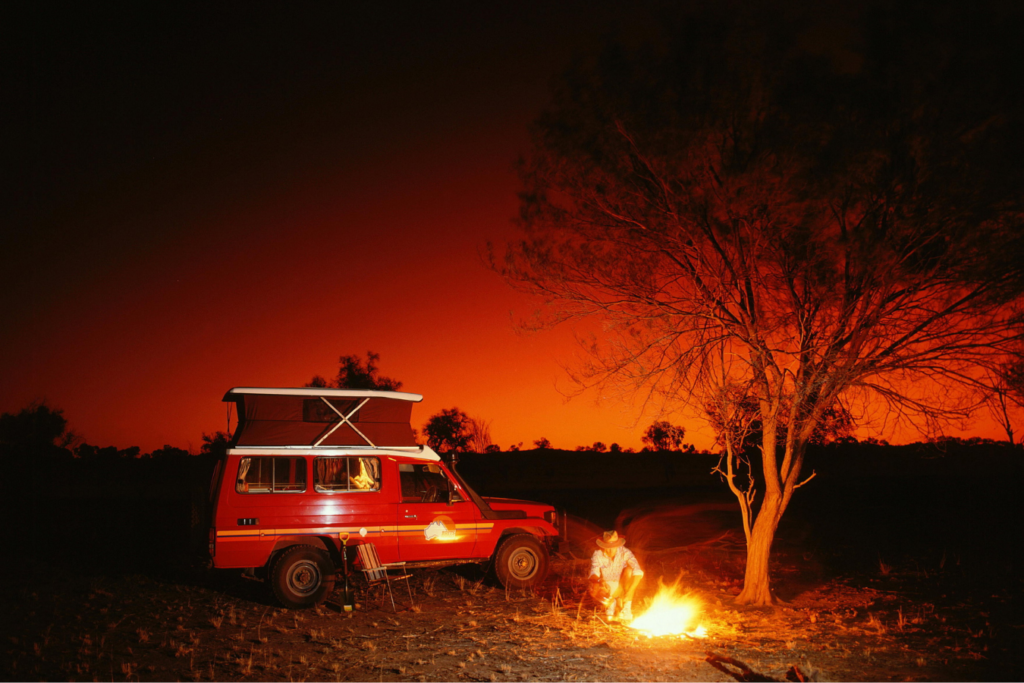
Pros:
- Connection with Nature: Camping allows for a unique outdoor experience, perfect for nature lovers.
- Cost-effective: Generally, camping is one of the most affordable accommodation options.
- Flexibility: Many campsites offer various options, from tent sites to cabins.
Cons:
- Weather Dependent: Outdoor conditions can impact your comfort and enjoyment.
- Limited Amenities: Basic facilities may not be suitable for everyone, however most camping sites offer laundry services and a pool.
Holiday Rentals
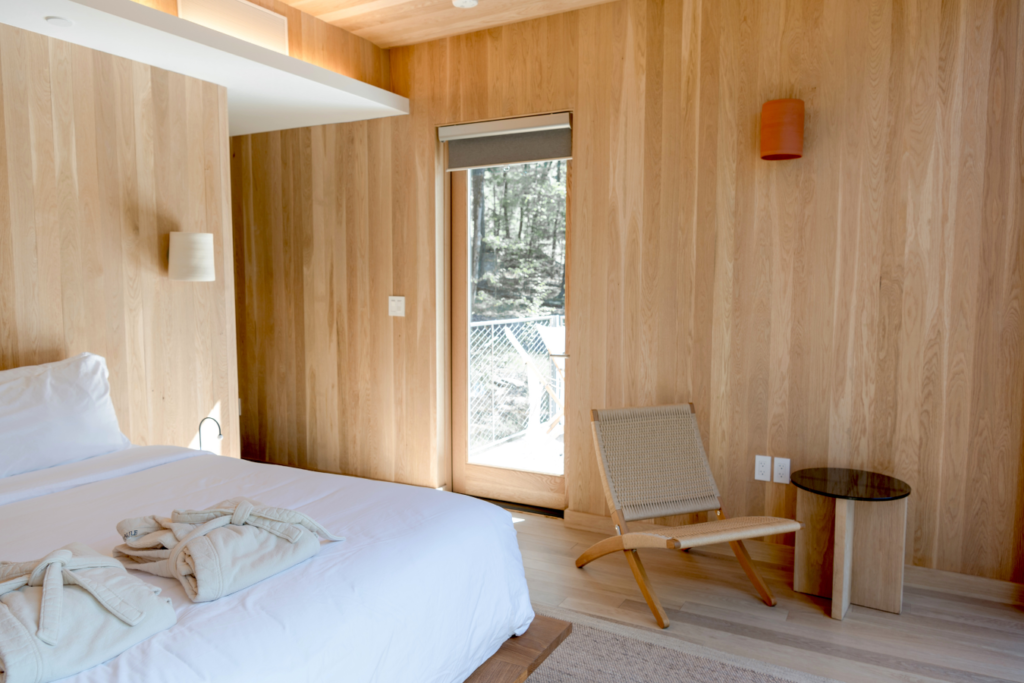
Pros:
- Home-like Experience: Offers more space and amenities, such as kitchens and laundry facilities.
- Local Living: Staying in a residential area can provide a more authentic travel experience.
- Flexibility: Ideal for families or groups who want to stay together.
Cons:
- Variable Quality: Standards can vary greatly between different rentals.
- Can be Misleading: Many holiday rentals will be nestled within resorts or hotels, making the guest experience confusing when expecting to be a hotel guest.
- No Staff on Site: If you book a private rental, there will usually be no reception or staff available should you require anything during your stay.
To find the best accommodation for yourself and your travel companions, you can use all the popular platforms like Booking.com or Airbnb. You may also consider booking directly with the hotel or camping site, who can usually provide a discount on top of the online price as a direct booking will not result in any fees for the establishment.
Most people opt to book through the previously mentioned platforms, however, as they often offer their own discounts and make the booking and payment process very simple and quick.
Pro tip from a resort manager: if you have any special requests for your stay (such as being on a high floor, having an ocean view, receiving some extra perks, etc.), always let the staff know ahead of time and call up a few days or a week ahead to confirm they received your request.
Better yet, you can say it’s your birthday, anniversary, or any other special occasion to make the chances of your request being accommodated even higher. Since so few people give a reason, that if you do – no matter how small – your chances of having the perfect stay on your travels increase exponentially.
Choose Your Mode of Transport
Australia has various transportation options:
Domestic Flights
Ideal for covering long distances quickly. Major airlines like Qantas, Virgin Australia, and Jetstar offer frequent flights between cities, and very often this actually works out cheaper than public transport or driving (again, because of the vast distances).
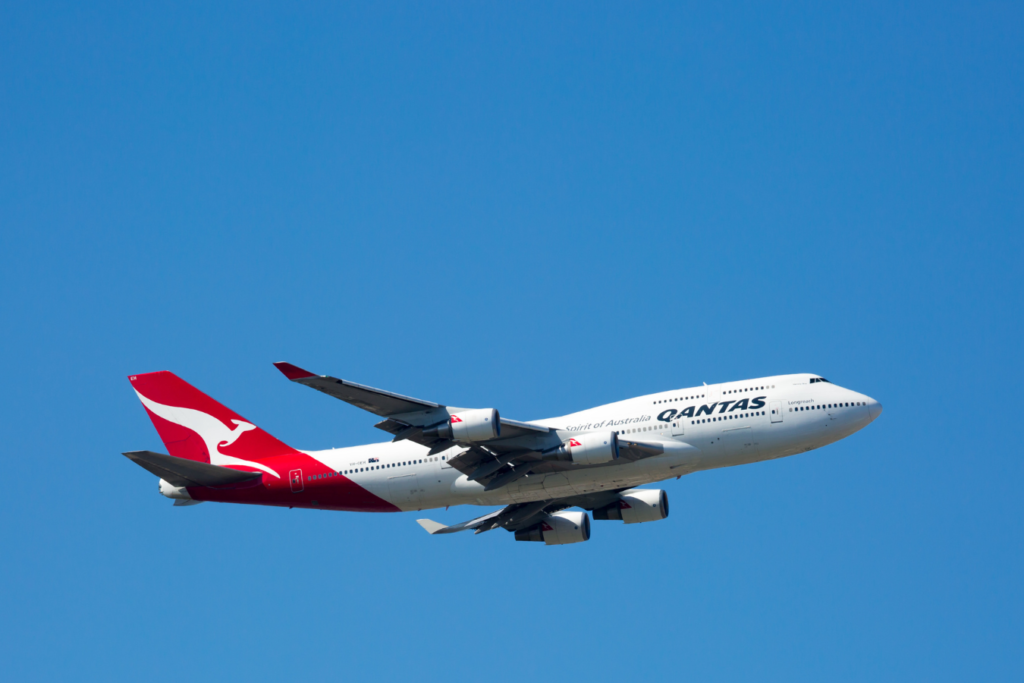
If you’re on a budget, Jetstar is one of the cheapest airlines, with really good coverage and connections, for both domestic and international flights. They often have promotions running, so you can even score a ticket for as little as $50. Prices of course all depend on your travel dates and how far in advance you book, so try to plan as much ahead as you can.
Most domestic flights in Australia offer food and drink on board, just like in any other country, however just like in other countries, it’s always very expensive and really not that great, so you’re better off bringing your own snacks and drinks.
A good thing about domestic flights, however, is that there are no restrictions on how much powders, liquids, aerosols and gels you can carry onboard – unlike international flights. So you don’t have to worry about your perfume when going on a holiday!
Remember also, that just because the flight is domestic, doesn’t mean it’s going to be short. The flight from Sydney, located on the east coast, to Perth, on the west coast, ranks among the longest domestic routes in the world. Spanning roughly 3,290 kilometers (2,045 miles), this trip usually lasts about 5 hours.
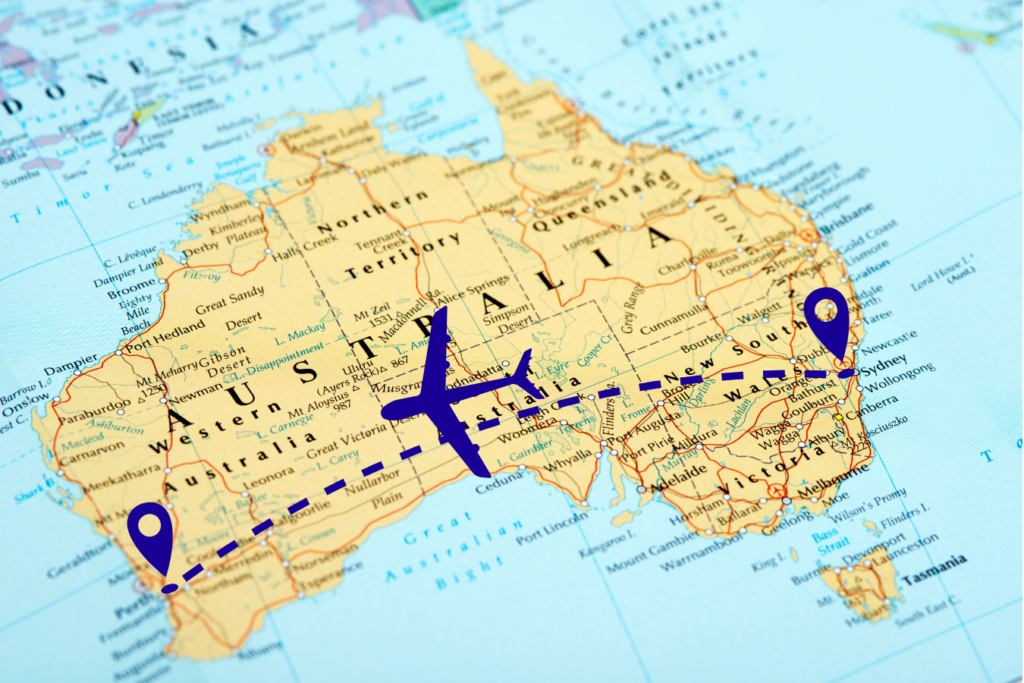
As a fun fact, this flight crosses three time zones! Longer still is the flight from Brisbane to Perth, which is a distance of 3,614 km (2,246 miles). For comparison, that’s roughly the same flight distance as from London, UK to Cairo, Egypt – 3,500km!
Road Trips
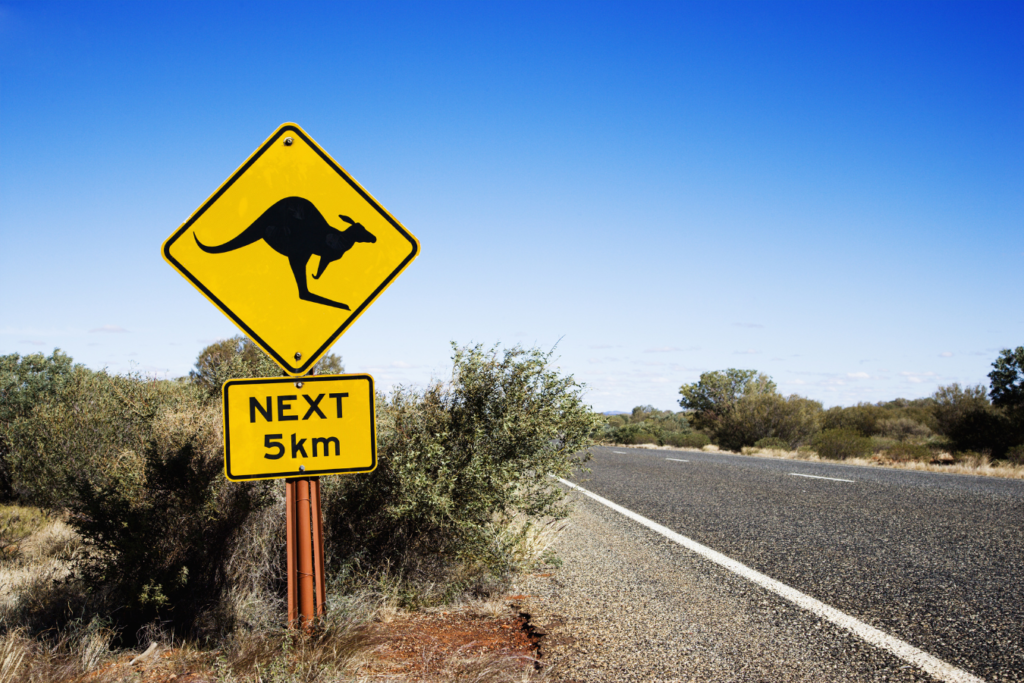
Driving is a fantastic way to travel and see the country at your own pace. Rent a car or campervan from companies like Hertz or Thrifty and explore scenic routes such as the Great Ocean Road or the Pacific Coast Highway. There are way too many amazing road trips to list here, so you can check out our post here that’s dedicated solely to road trips.
Besides the big car rental companies listed above, there are plenty of smaller, cheaper, and more varied options for your driving adventure.
- Jucy: This is a really fantastic option if you want to try “van life” traveling, or go somewhere more off grid where finding accommodation could prove challenging. There are many options available, starting from a small, basic van, to a bigger motorhome for 6 people.
- Budget Australia: This is a fairly large car rental company in Australia, offering not just cars, but also vans, large trucks or even buses. They also offer moving services if you’re looking to relocate!
- Vroom Vroom Vroom: This company is smaller than the previous two, which is also reflected in their cheaper pricing. Beyond just cars, they also rent vans, utes and campervans, giving you more travel options.
- Rad Car Hire: A smaller rental company that services predominantly South-East Queensland, offering really great deals and prices.
- Honorable mentions: Apex Car Rentals and Spaceships Rentals
Another incredible option are car relocation services such as Imoova or TransferCar. When a car rental company needs one of their vehicles returned to a certain location, they offer it for as little as $1 per day to drive back to their desired location! There is often a limit on how many days this trip should take, but it’s usually a reasonable allowance and is a great way to travel between cities if you want to explore a bit along the way – and don’t want to spend a fortune!
Public Transport
Use trains and buses for intercity travel. Cities like Melbourne and Sydney have very efficient public transport systems, including trains, trams, and buses, while suburbs and more regional areas not so much.
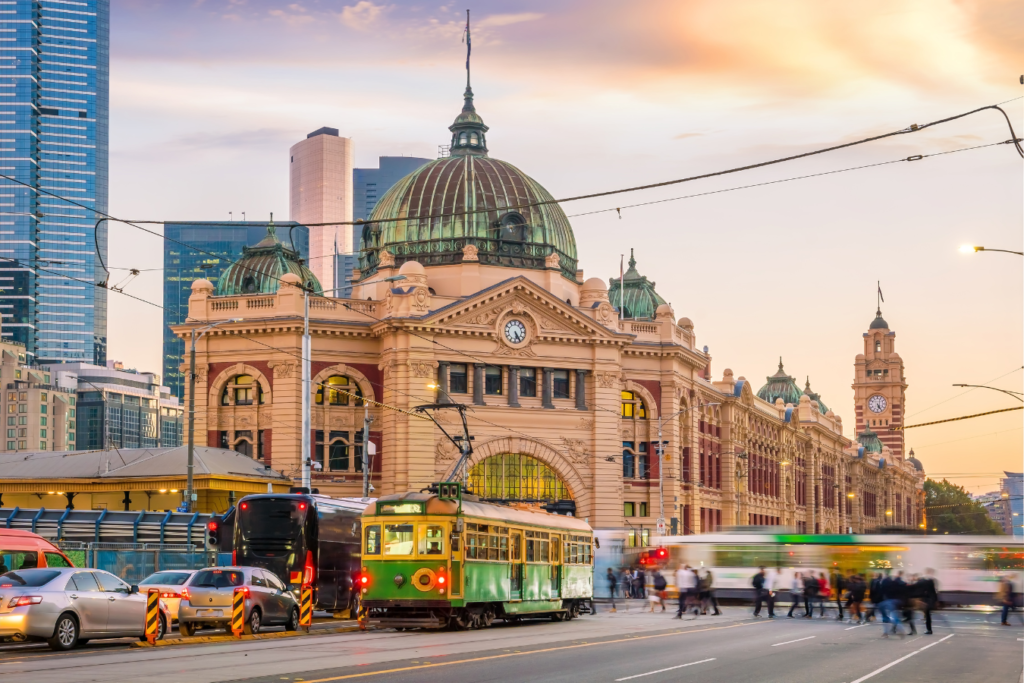
You can check out Public Transport Victoria or Transport for NSW for timetables and fares. If you want to learn more about public transport in Australia, we have a detailed post on just that here.
Stay Connected and Prepare
SIM Card & Wi-Fi
Getting a local SIM card for your phone will make your life much simpler while you travel, with easy navigation and communication whenever you need it. While many establishments, such as cafes and hotels, offer free Wi-Fi, this isn’t always reliable and can be stressful if it’s not available when you need it most.

Check out Optus or Telstra for prepaid plans. Consider also where you’re going – coverage by any provider will be very good in the cities, however if you plan on traveling to the Outback or other remote areas, you may want to check which provider offers the best coverage for your region.
At the time of writing, Telstra is at the forefront of mobile coverage, offering the best mobile coverage in the country – which might explain its high price. You get what you pay for, after all.
Let’s talk WiFi for a minute here: WiFi in Australia, as a whole, is pretty bad. Actually, internet speeds in Australia are just bad. Australia is often cited as “having some of the slowest and most expensive internet services in the developed world”, currently ranking as #81 on Ookla’s index of fixed broadband speeds worldwide, behind Uzbekistan, Venezuela and Egypt, and just ahead of Belarus and Kazakhstan.
The slow internet is mostly attributed to the fact that Australia is such a huge country with people spread far apart, meaning any new infrastructure takes a very long time to develop. There also aren’t many companies competing to provide a better service. Old network equipment and past government decisions and policies have also kept speeds down and prices up.
This is not to say, however, it’s unaffordable. A 2020 study showed that 88% of Australian households had a fixed NBN (National Broadband Network) subscription, showing that even if it isn’t the best, it’s still very widely available to the greater population.
Another 2024 study showed that the nbn network now has more than 8.6 million premises connected and accessing a service, which equates to over 20 million people relying on the nbn network every day. To put that into perspective, at the time of writing, the total Australian population is 27.5 million people.
Now, none of the above is anything we can control! It is what it is, and you get used to it. Just keep the above in mind as a warning if you come from a country with great internet. Patience will be your friend on this front! Perhaps this will also be a good incentive to spend more time in nature as you travel.
Embrace Local Culture
Local Events
Check local event calendars for festivals, markets, or sports games happening during your travels. Websites like Eventbrite can help you find local happenings. Many cities also have their own council websites and calendars that will post local events, such as the Gold Coast Council or the NSW Government calendar.
Many of these events showcase the authentic flavour of the area and offer a fantastic opportunity to mingle with locals whilst experiencing the region’s unique culture and atmosphere. Remember to book tickets in advance for popular events, especially during peak tourist seasons, to avoid disappointment.
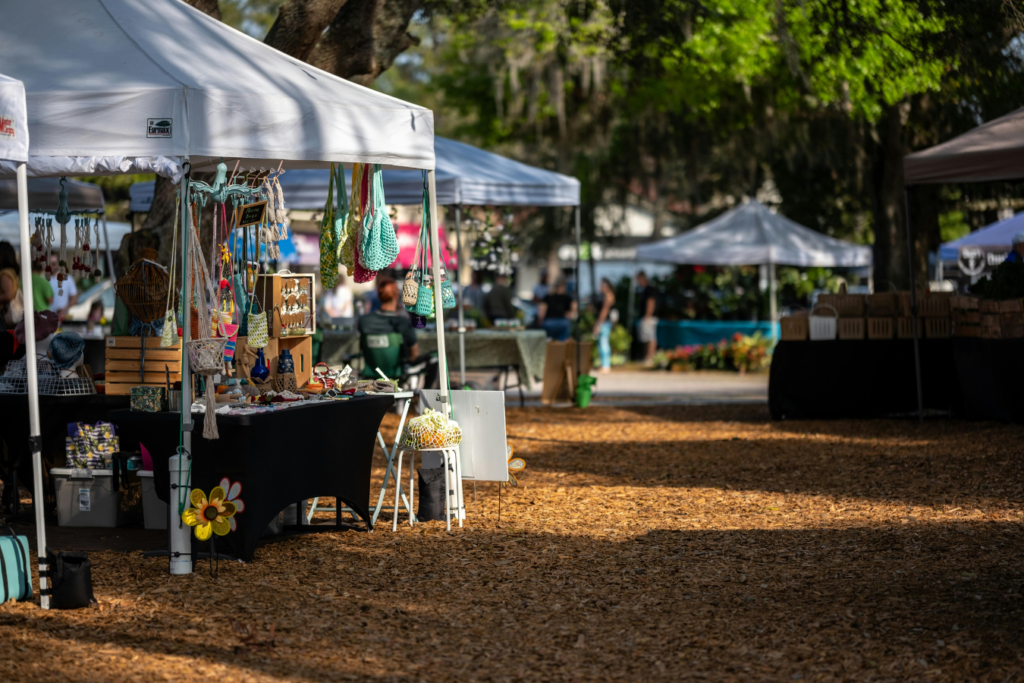
Many Australian cities and towns also host Farmers’ Markets and night markets, which are very fun to explore, even if you don’t buy anything. At the Beachfront Markets in Surfers Paradise, for example, you can hold a snake or crocodile!
Food and Drink
Don’t miss out on trying Australian cuisine while you travel! Explore local cafes, restaurants, and food markets to savor dishes like meat pies, fish and chips, and the famous Vegemite. Visit Good Food for restaurant recommendations, an excellent resource for discovering everything from hidden neighbourhood gems to fine-dining establishments.
Australia is known for its BBQs, high quality beef and seafood, as well as beautifully fresh exotic fruits and vegetables, so whatever your diet, you’ll definitely find something to your liking.
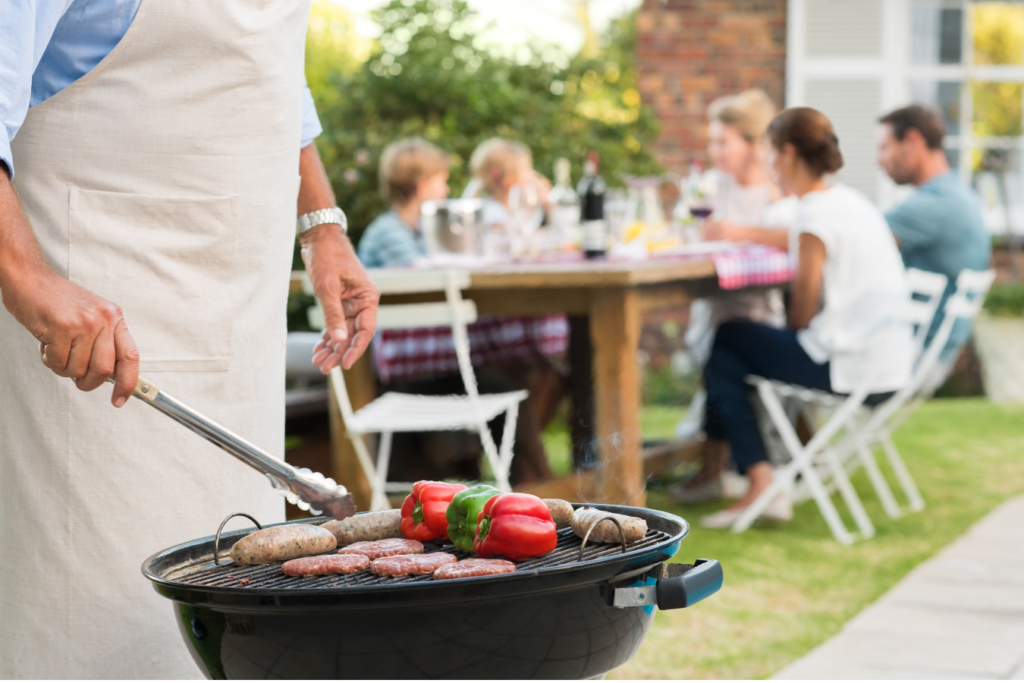
Given that Australia is such a cultural melting pot, there’s also no shortage of amazing food from all sorts of different cultures and cuisines, so wherever you’re from – you’ll be able to taste home, too.
As you might have heard, Australians are pretty obsessed with coffee. In fact, Melbourne is sometimes referred to as the coffee capital of the world! There are cafes on almost every corner of every street, with Australia actually growing some of its own coffee beans in Queensland and northern New South Wales, which are prime locations due to the subtropical climate.
So even if you’re not a huge coffee addict, you can give the local coffee a try – it might just convince you to drink more! And if you’re not into liquid coffee, you might want to try chocolate coffee beans – as the name suggests, just coffee beans covered in chocolate (not an affiliate, just really good).
For the coffee enthusiasts, if coffee is the centre aim of your travels, there are plenty of coffee tours available across these states, allowing you to taste and try many different varieties, roasts, origins and intensity profiles to find the one you like the most.
Safety and Environment
Stay Safe
While Australia is generally a very safe country, exercise caution while you travel, especially in rural or remote areas. Always keep an eye on your belongings and stay aware of your surroundings. In urban areas, use common sense precautions like avoiding poorly lit streets at night, keeping valuables secure, and being mindful in crowded tourist spots. While pickpocketing isn’t common, it does happen in major cities, just like anywhere else in the world.
Keep in mind, too, that safety in Australia is not only about other humans. As you’re certainly aware, there are plenty of dangerous animals (and plants) in this island nation. These are typically not a threat if you spend your time in the cities, however if you plan on venturing out and exploring nature on your travels, there are a few local beings you should be aware of:
Animals
Snakes
Australia is home to many venomous snakes, including the Eastern Brown and Inland Taipan. Wear closed-toe shoes and long pants when walking in bushland, especially if in thick, tall grass. If you stick to clear, marked paths, you dramatically lower your chances of any encounters.

If bitten, remain still, apply pressure, and seek immediate medical attention. While not always possible, it’s very helpful if you can get a photo of the snake, as this will help the medical professionals decide which anti-venom they need to administer. One more thing – never try to catch or kill a snake!
Spiders
Be cautious of Redback and Funnel-web spiders. Check shoes and gloves before wearing them, especially if left outside. This isn’t so much a concern if you’re in the city and you keep all your shoes indoors, but it’s a good habit to adopt if you stay in Australia for longer or plan to travel to more remote areas.
Most spider bites are non-lethal, but you should seek medical attention if bitten to ensure you don’t get an infection. As with snake bites, do your best to get a photo of the spider if possible, or if safe to do so, catch it in a glass container and bring to the hospital, again, allowing doctors to choose the right anti-venom.
Marine Life
As one of the more well known predators, sharks are fairly common in Australian waters. They can be found anywhere from the ocean to local rivers and bays, so be mindful when you go swimming. Sharks are most active in the early mornings and late evenings, so day swims are usually fine.
But sharks are not the only marine animal to keep an eye out for – box jellyfish and Irukandji jellyfish are some of the most venomous jellyfish in the world, and are present in northern Australian waters, especially in the warmer months (October to May). If you plan on traveling to the beach to take a dip in the ocean during those months, consider yourself warned.
Always swim between the flags and follow warning signs. In most northern regions, you will be advised to wear protective stinger suits when entering the water. If you go exploring the reef, be aware of blue-ringed octopus in rock pools, and avoid touching or stepping on stonefish.
Crocodiles
This should be obvious advice, but never swim in crocodile-inhabited waters! Obey all warning signs and stay at least 5 meters from the water’s edge, as crocodiles are extremely fast and can quickly jump out of the water. Be extra cautious during breeding season (for most species, this is November through to March).
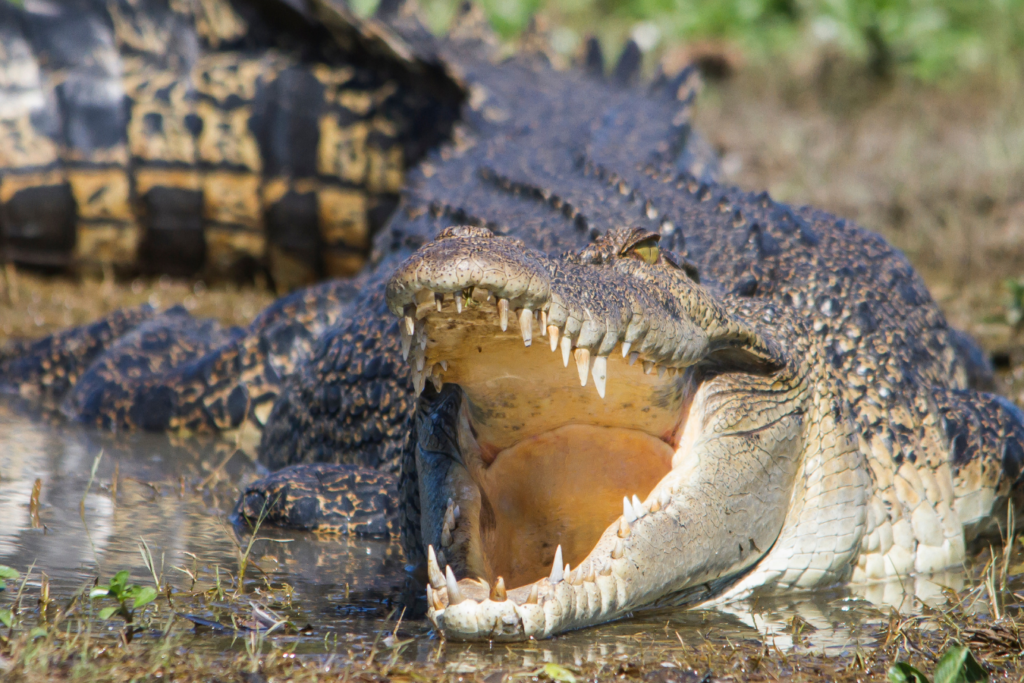
Plants
Stinging Trees
The Gympie Gympie (Australian stinging tree) can cause severe pain, so before you go out into the rainforest, learn to identify and avoid these plants. While they’re most common in Queensland and New South Wales, it’s good to keep an eye out wherever you go.
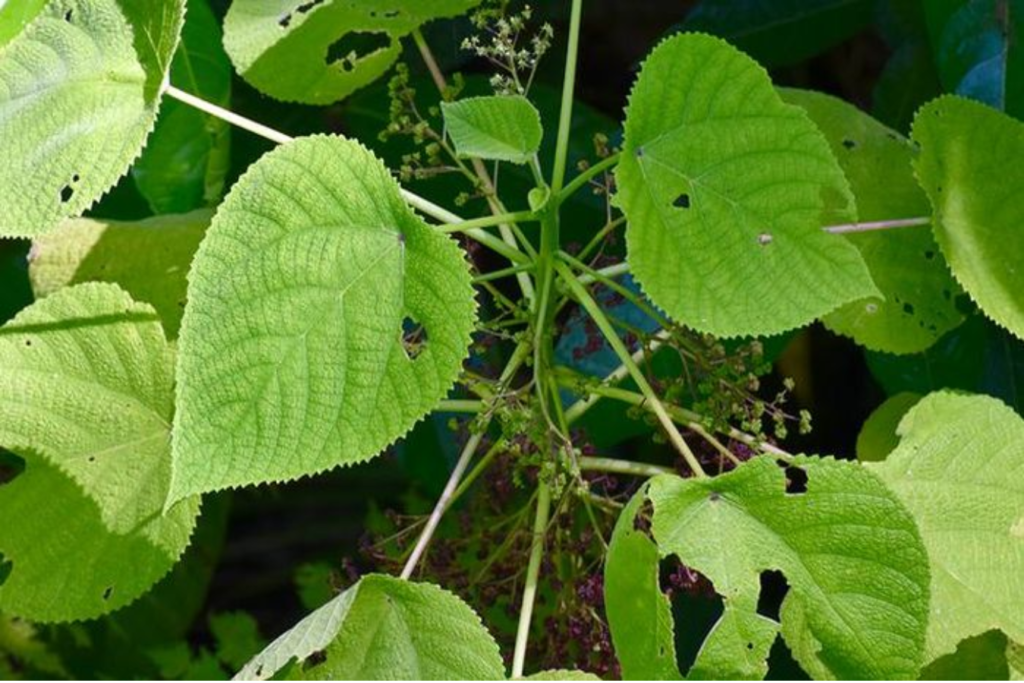
It’s a good idea to have a protective layer of clothing when in rainforest areas, because being a little warm is 100% preferable to the sting! Wearing a genuine linen shirt will allow plenty of air to flow through, keeping you cool, while protecting from stings. If you plan on hitting a few hiking spots while you travel, this is a must.
Toxic Plants
Some native plants can cause severe allergic reactions, so don’t eat any wild berries or plants. Some examples include yellow and pink oleander, deadly nightshade (also known as ‘devil’s berries’ or ‘death cherries’), or the milky mangrove. This is of course not an exhaustive list, so make sure you do your research for the state and area you’re planning on going to.
Remember: Most Australian wildlife will not attack unless threatened. The key is to be aware, respectful, and prepared. When in doubt, maintain a safe distance and never attempt to handle or feed wild animals.
Respect Nature
If you’re exploring national parks or natural reserves, follow guidelines to keep wildlife safe and protect the environment. Always stick to marked paths and clean up after yourself. Australia is incredibly biodiverse, with around 80% of its plants and animals found nowhere else on Earth, so we all need to do our part to protect this oasis of life, no matter how dangerous it is!
For more information on national parks, you can visit Parks Australia.
Note: most of the widely visited national parks in Australia have paid entry and require tickets, so be sure to budget for this during your trip.
Prepare for the Weather
Australia’s climate can vary dramatically between regions. The distance from the northernmost to the southernmost points of Australia (including Tasmania) is approximately 4,600km, which reasonably explains the varied climates! For comparison, the distance between Vancouver, Canada and Tijuana, Mexico is about 2,300km, and the distance between Oslo, Norway and Silicy, Italy, is roughly 3,300km. And I’m sure you’re aware how different the weather is between those places!
The big difference to remember about Australia, however, (and the southern hemisphere in general) is that the south is colder than the north, so while it might be snowing in Tasmania (very south), it could be 27C-30C in far north Queensland.
Check the Weather
Keep an eye on weather forecasts for your destination, as conditions can change quickly. The Bureau of Meteorology provides up-to-date weather information. If you’re visiting in the summer (December – February), keep in mind this is cyclone season in most northern regions of Australia, especially the north-west coast between Broome and Exmouth, which is the most cyclone prone region in Australia.
Pack Accordingly
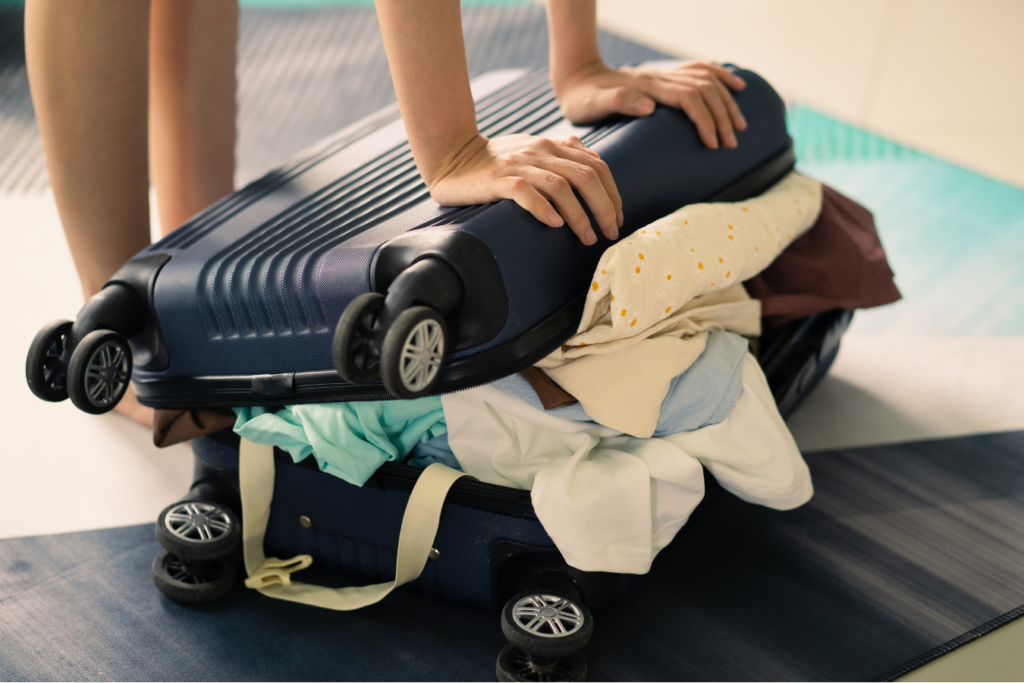
Bring appropriate clothing for your travels. If you’re visiting the tropics, lightweight clothing is a must, including linen clothes and lightweight, breathable rain coats. In the south, you might need warmer clothes depending on the season, including warmer shoes and coats. Australia is definitely not known for its cold weather, but do keep in mind that it might snow in the higher regions of New South Wales, Victoria and Tasmania in the winter, so don’t skip the hat and gloves!
If you’re short on luggage space that’s no problem either, because you can always buy something locally (which could also make a nice souvenir for the future, to reminisce about your Australian adventures).
Learn About Indigenous Culture
As you travel, take the opportunity to learn about Australia’s rich Aboriginal and Torres Strait Islander cultures. These experiences offer profound insights into the world’s oldest living cultures and their deep connection to Country. Understanding and respecting Indigenous cultures begins with acknowledging that you are on Aboriginal land and waters—a continuous connection spanning over 50,000+ years.
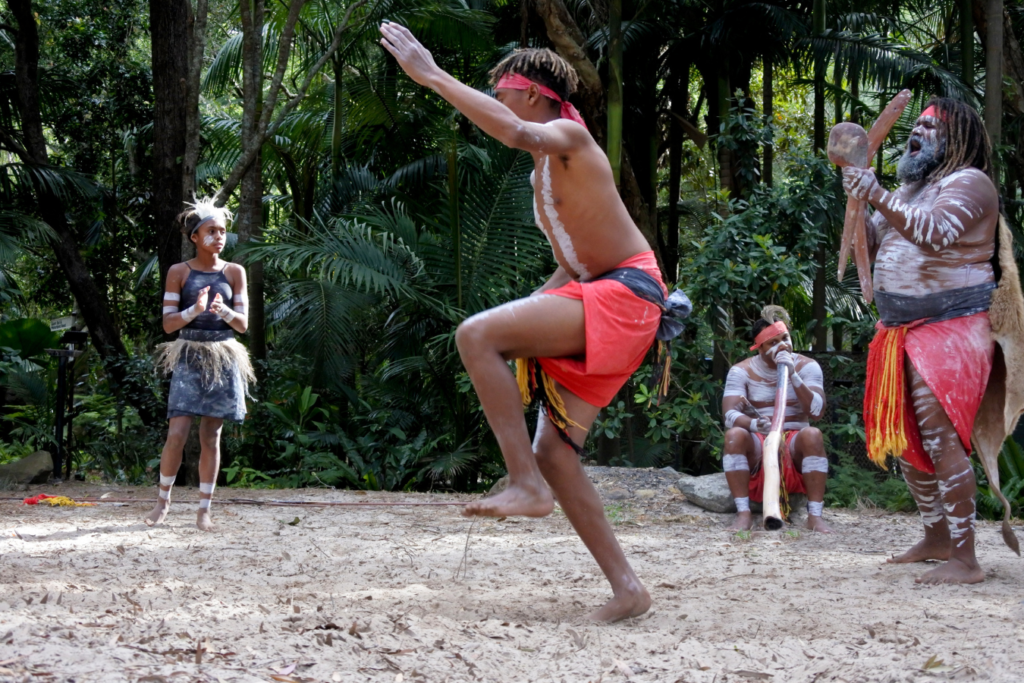
Cultural Tours
Participate in guided tours led by Indigenous peoples to gain deeper insights into their history, stories, and traditions. These experiences might include bush tucker walks, where you’ll learn about traditional food sources and medicines, or visits to Aboriginal-owned art centres where you can meet artists working in their communities.
Tourism Australia and local Indigenous-owned tour operators offer various options to suit different interests and timeframes, based on your schedule. Consider also timing your visit to coincide with Indigenous festivals that celebrate culture through music, dance, and ceremony. These might end up being the highlight of your trip, not just because of the entertainment they provide, but you might also learn and see things you never dreamt of.
Just remember to book or buy tickets to any experiences in advance, as there’s usually limited availability, and be mindful of seasonal factors that might affect your travels (wet season, cyclone season, or summertime in the Outback, with temperatures commonly over 40C).
Respect for Land
When traveling to sacred sites and Indigenous communities, it’s essential to observe local protocols and guidelines. This might include seeking permission before taking photographs, following designated pathways, and respecting areas that may be restricted for cultural reasons.
You might also consider learning a few basic words in the local language to show respect, however do keep in mind there are hundreds of different languages and dialects spoken all over Australia, each with their own traditions and protocols, so do your research before you start learning!
Be Flexible and Enjoy
While planning is essential, flexibility can lead to experiences and memories that will stay with you for the rest of your life. This can be stressful at times, but even if the trip doesn’t work out exactly how you envisioned it, it’s always a lesson for the future.
Stay Open to Change
Sometimes, the best adventures come from unplanned detours! Be prepared to adjust your travel plan to explore hidden gems along the way. There are always plenty of signs for “tourist drives” along the main highways, so why not follow one to see where it takes you? Just remember that this route will certainly take more time than the main highway, so if you’re on a schedule, this might not be the way to go.
You will most certainly meet new people along the way, and if they’re local, they might have some recommendations for special places you can visit. Just tell them what you’re looking for – be it a secluded beach, a hiking spot or best little restaurant in town, most people are more than happy to share their recommendations. And you never know, you might just be surprised by what awaits!
Take Your Time
Don’t rush your travels. Enjoy the journey, take breaks, and soak in the breathtaking views. I know it’s tempting to try to cram as much as humanly possible into your 1 week holiday, but sometimes less can be more. You might not see everything there is to see, but you’ll have truly felt the vibe and atmosphere of the places you visit, instead of just ticking them off your list.
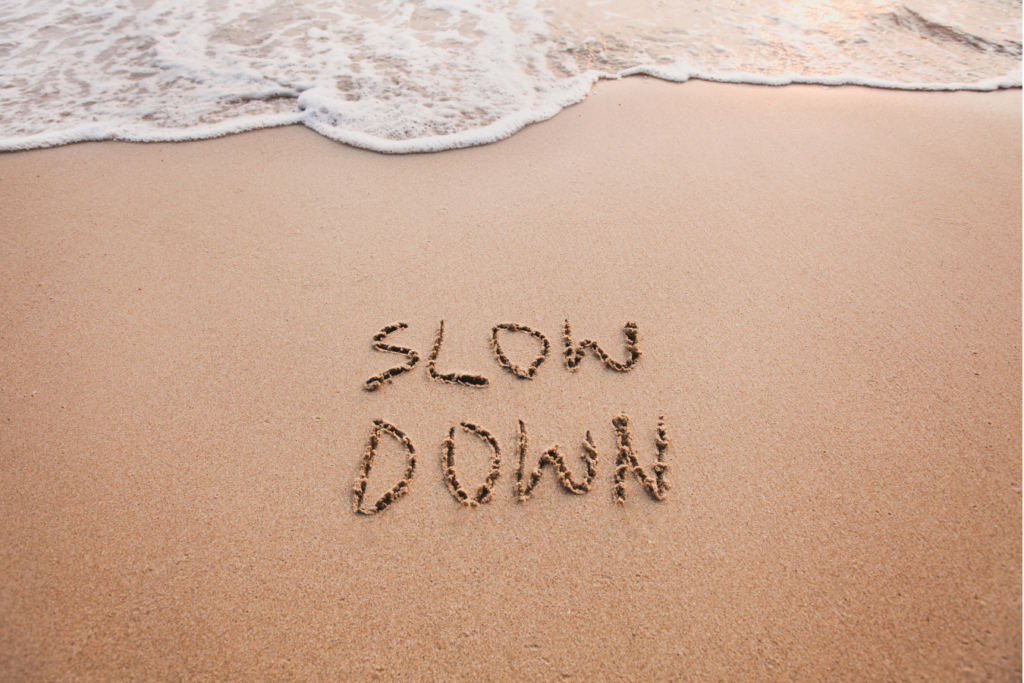
Note: this is just my personal advice. I know some people that love rushing everywhere on holiday, end up more tired at the end than when they started, but this is the only time they feel they’ve made the most of their travels. If this is you, more power to you for knowing yourself so well! If not, though, don’t feel pressured to be like that. You can explore and enjoy your time however you feel is right, so if this is by slowing down and soaking up the vibes, you do you.
Conclusion
Traveling within Australia opens the door to exploration and adventure. With these tips, you’ll be well-prepared to navigate the unique landscapes and cultural experiences that make Australia a fantastic destination. If you have any more questions or need more tailored travel advice, just let me know—I’m here to help you dive into your Aussie adventure!
Good luck—you’ve got this!


